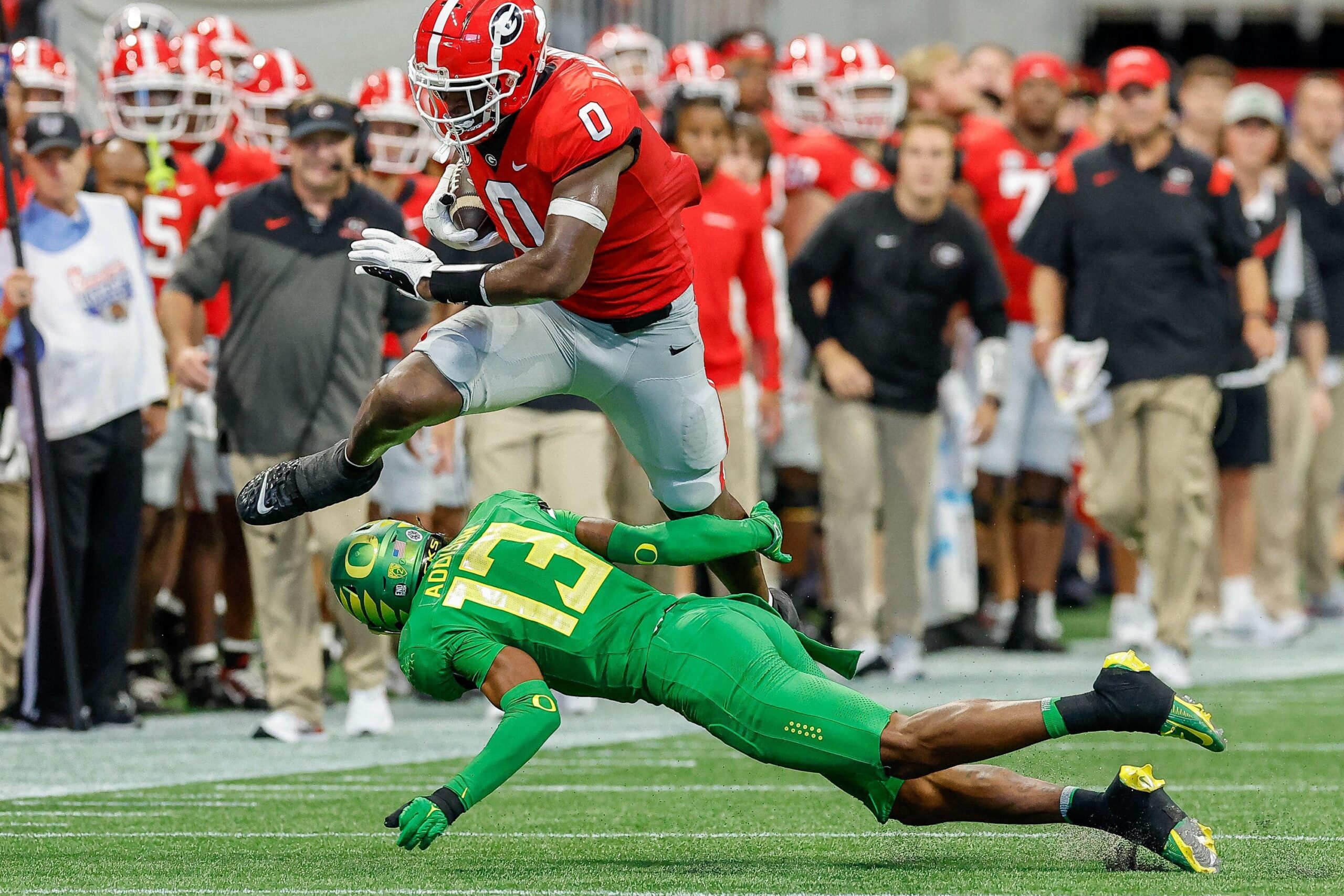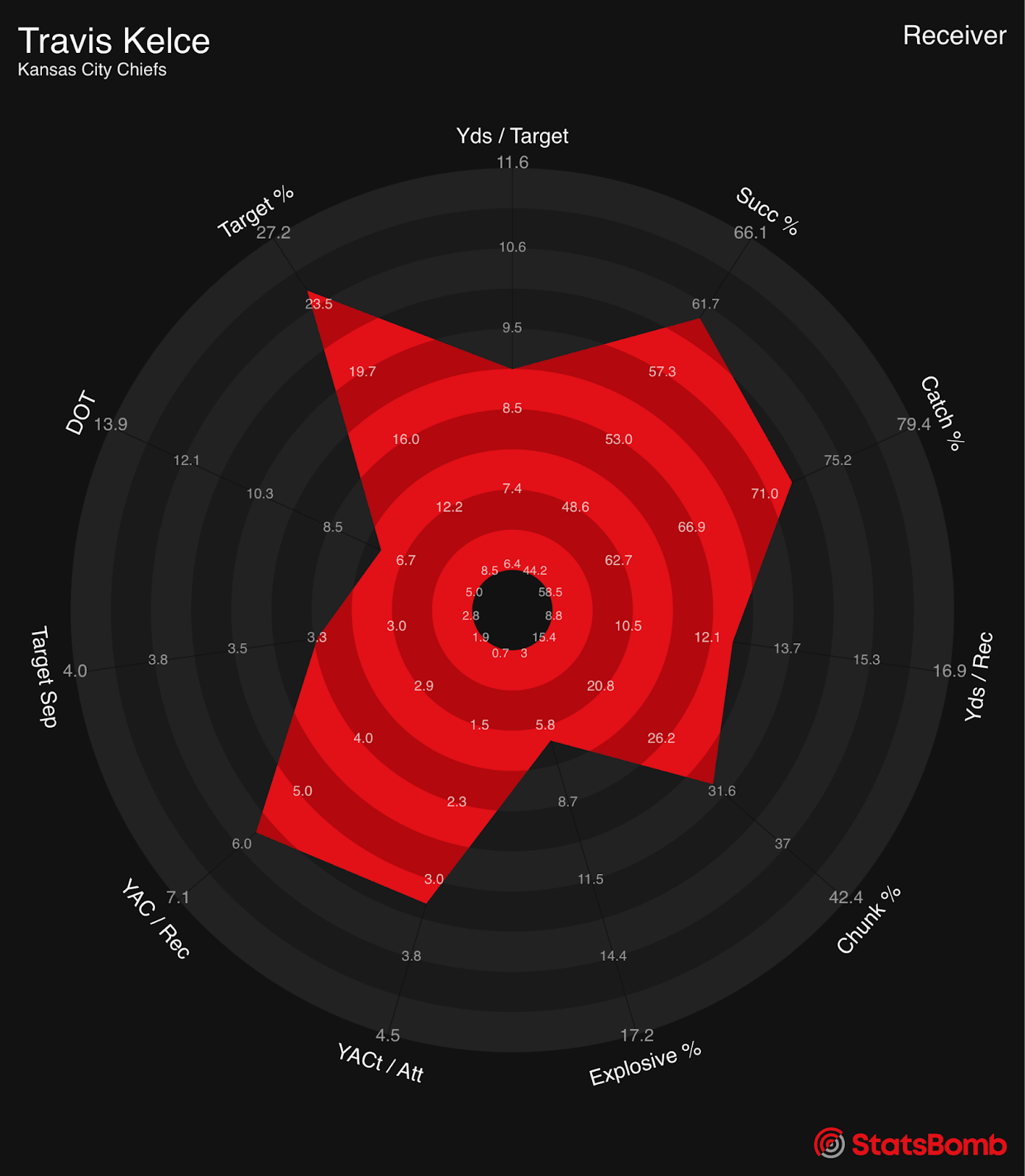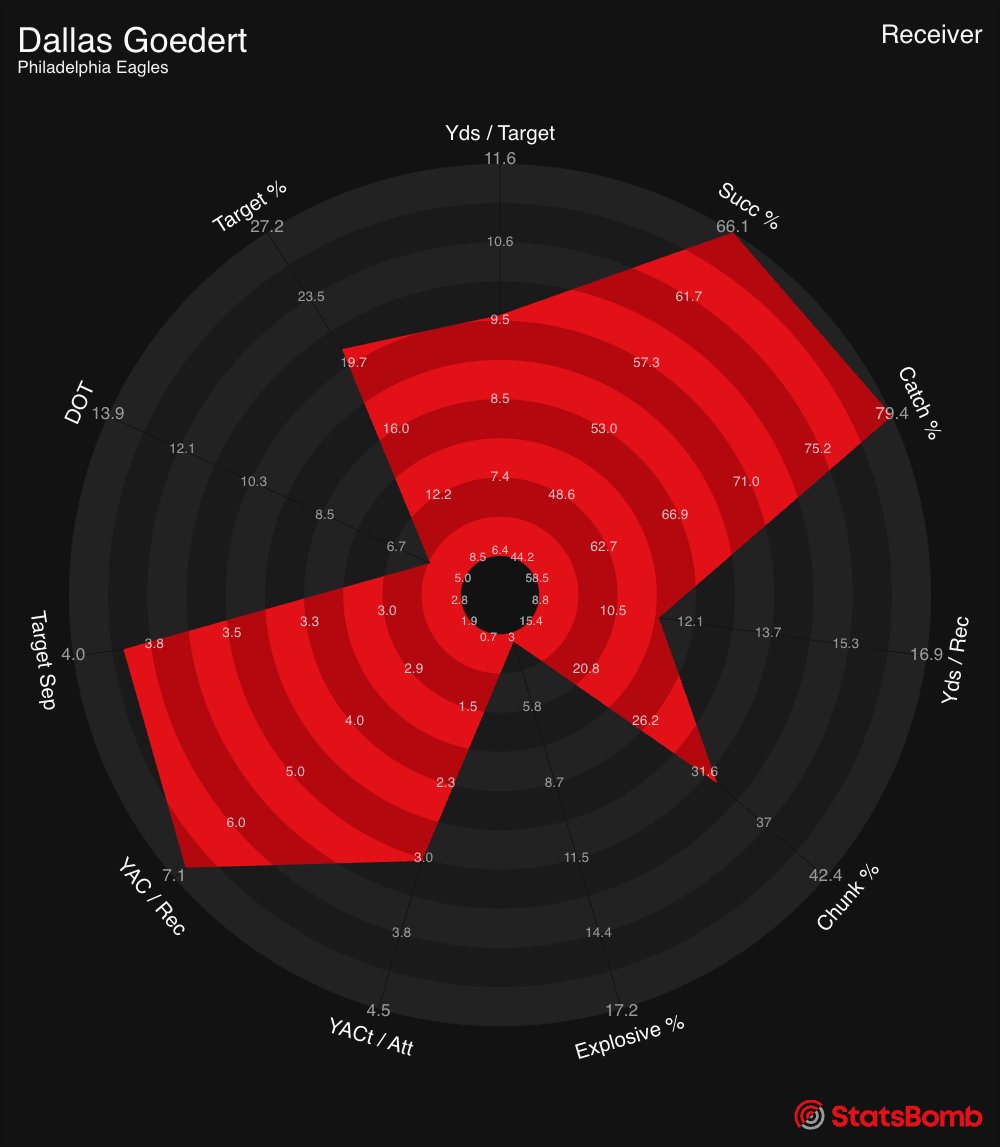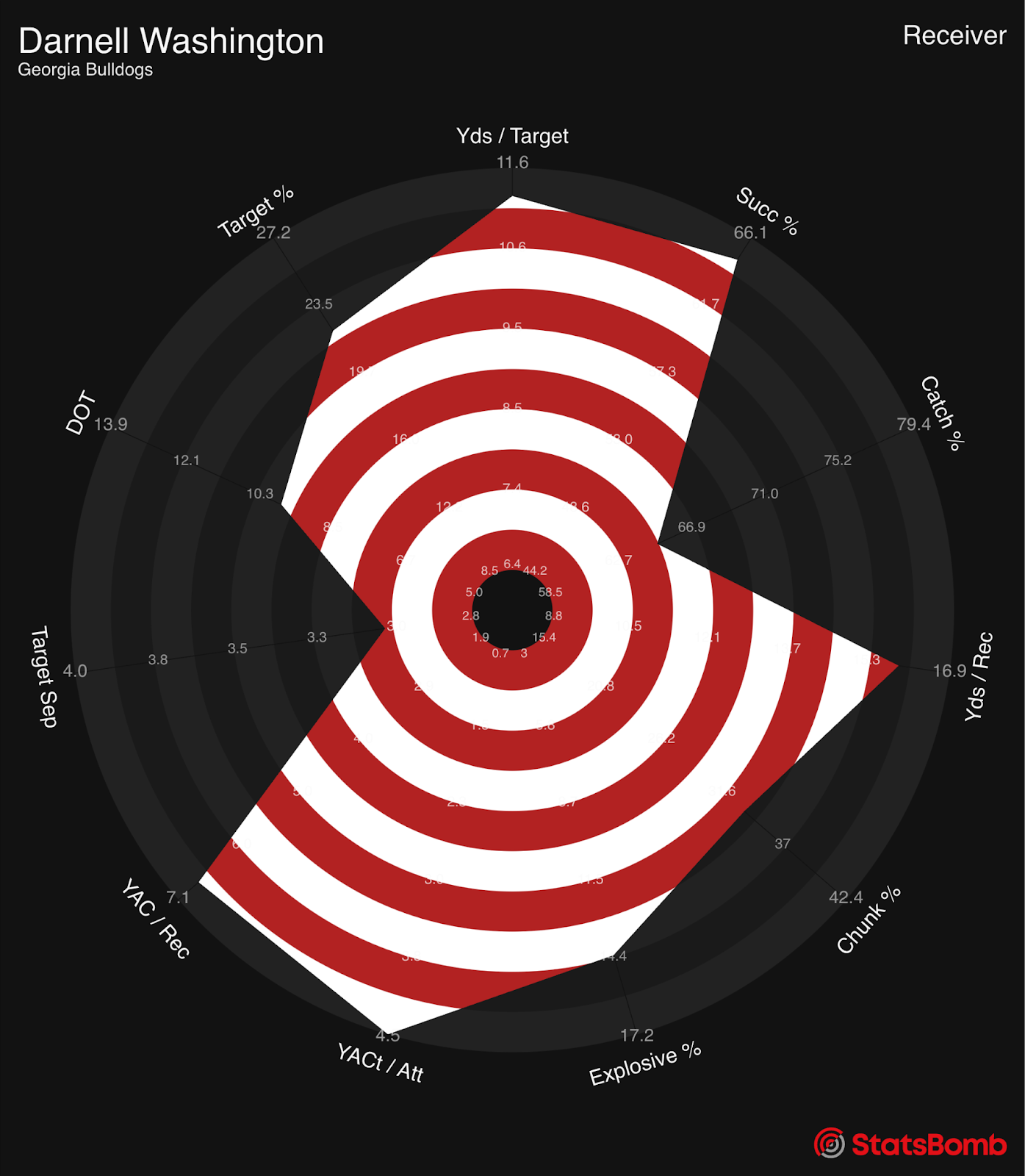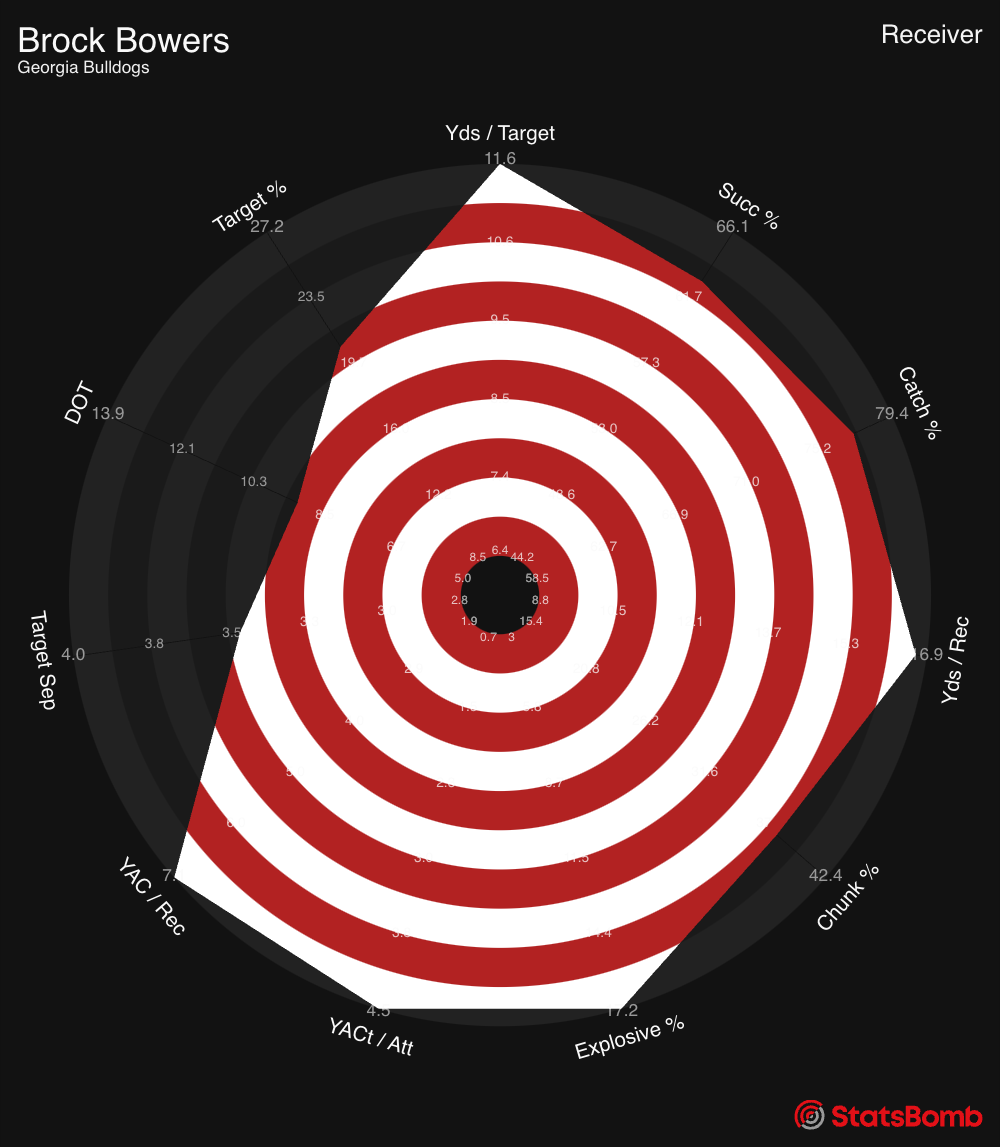Just over a month ago, we watched the Kansas City Chiefs win the Super Bowl. There were so many great storylines from the game: Patrick Mahomes taking another step towards dethroning Tom Brady as the GOAT, Jalen Hurts cementing himself in the discussion of top QB's in the league, Andy Reid coaching against his former team, and we can’t forget the halftime show with Rihanna killing it on stage while pregnant. The game was one of the best-played Super Bowls ever. One of my personal favorite parts was the memorable plays from two tight ends: Travis Kelce and Dallas Goedert.
Travis Kelce is one of the best tight ends in the league and is putting together a resume to be one of the best tight ends ever. He already holds NFL records for most 1,000-yard receiving seasons for a tight end (7), most total receiving yards in a single season (1,416), most seasons with 100+ catches by a tight end (3), and more. With Tyreek Hill moving to the Miami Dolphins after the 2021 season, Kelce had to take on an even bigger role this year. And step up he did. He had an incredible season, placing 3rd in receptions (1st among TE’s), 8th in yards (1st among TE’s), 2nd in TD’s (again 1st among TE’s). He performed at a WR1 level, while playing tight end.
Dallas Goedert does not have quite the same career resume as Travis Kelce. No pro bowls, All-Pro teams, or 1,000 yard seasons. But when his number was called on Super Bowl Sunday he made some of the most impactful plays in the game. Namely a great catch on 3rd and 14 on the sideline to keep the drive going in the third quarter. His ability to create big plays added another weapon for a potent Eagles offense.
Tight End
Tight ends are the swiss army knives of football players. Most offensive positions have one primary job. Offensive lineman block, receivers catch, running backs run the ball. Quarterbacks are the obvious exception because of everything they are asked to do. But tight ends are the other position that is asked to do multiple things at a high level. Truly great tight ends can block almost as well as an offensive lineman and are also as effective as wide receivers in the passing game. Tight ends can create huge problems for defensive coaches because of matchup problems. What type of personnel do you put out on the field, especially as multiple tight ends are involved? Do you treat the tight end as a receiving threat and put more DB’s on the field? Or do you try and match up a linebacker with the tight end? These are the types of questions that give defensive coaches nightmares.
Another advantage of having a good tight end is their contract. As stated above, Travis Kelce performed as well as a top-tier wide receiver this season. Yet, his average annual salary is just over $14 million. Contrast that with D.K Metcalf at $24 million average per year (APY), Davante Adams at $28 million APY, or Tyreek Hill at $30 million APY. The Kansas City Chiefs got $28 million production on a $14 million contract. It’s not as big of a benefit as a stud QB on a rookie salary, but it is a huge deal.
Potential Round 1 Tight Ends
This year there are 5 tight ends who have been highly ranked on varying mock draft boards: Dalton Kincaid (Utah), Sam Laporta (Iowa), Michael Mayer (Notre Dame), Luke Musgrave (Oregon State), and Darnell Washington (Georgia). Most likely not all five tight ends will go in the first round, but there is some serious potential in this first group of tight ends.
Dalton Kincaid
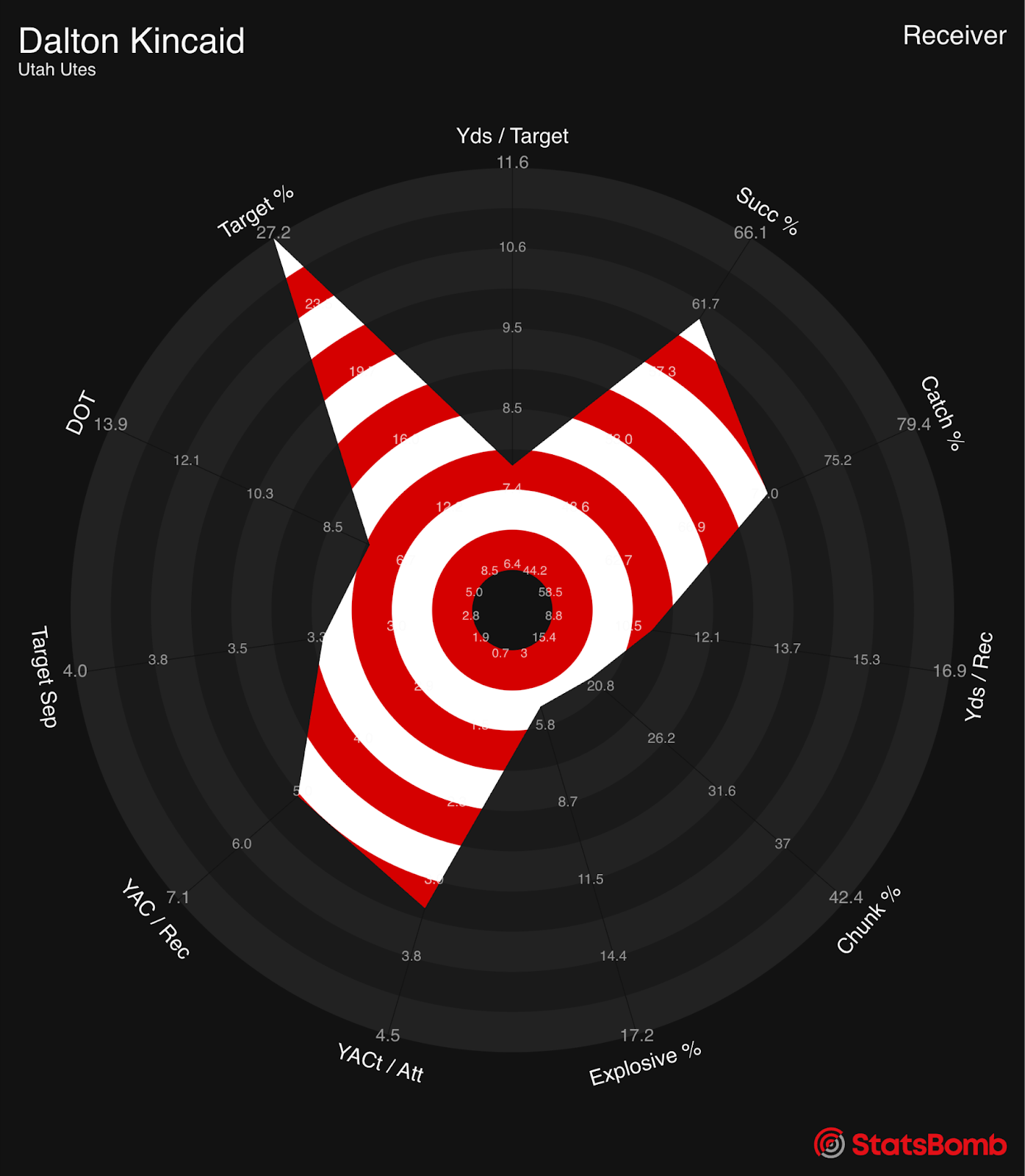
As a former coach, I am drawn to using film as an evaluative tool. I like getting initial information about a player from a statistics point of view, but then will dive right back into film to confirm what I am seeing. Three clips into watching Dalton Kincaid’s film I thought (I definitely didn’t say it out loud as I was alone in my office) that he looked very similar to Travis Kelce. Kincaid runs smooth routes, catches away from the body well, and has incredible balance. Not to mention he balls his hands up as he runs routes like Kelce. Interestingly enough, they performed at similar levels according to our metrics. Kelce has a slightly higher chunk % (defined as plays that gain 15 yards or more, explosive % is defined as 30 yards or more), and higher yards per target. But the depth of target, YAC, target separation, and many more point to very similar players.
With Kincaid’s ability in the pass game, you would think that he would have been utilized in the slot or out wide more in college. But he lined up in a tight end position 65% of the time, more than some of the other more “traditional” tight ends like Michael Mayer and Sam Laporta. Darnell Washington only lined up 67% of the time at tight end, just slightly more than Kincaid.
Sam Laporta
I did it, I watched some Iowa offensive film, and I lived to tell the tale! As poor of a showing as it was for their offense this past season, Sam Laporta was a major bright spot. He was able to routinely turn plays that looked like nothing into huge gains. And this shows in his radar. His low chunk %, but high explosive % shows that when he had big plays, they were BIG plays. Almost all his big gains were 30 yards or more. That is a great sign when looking for future NFL players. His radar is similar to Kincaids and Kelces, except for the higher explosive %, and lower success %. Laporta was very much a boom-or-bust player option in the receiving game. As a bright spot in a dearth of offensive production at Iowa, it’s easy to see the tools are there.
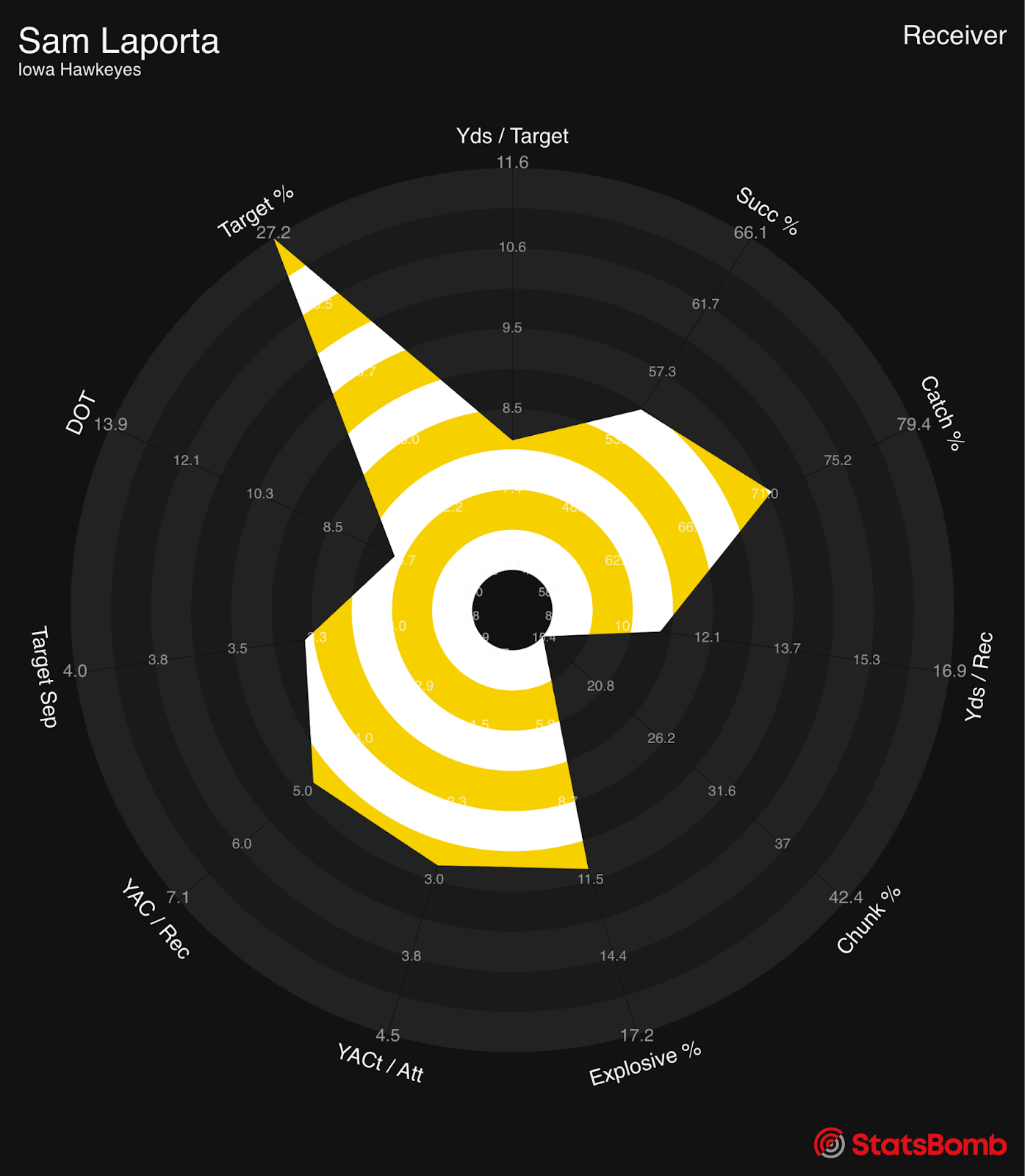
Michael Mayer
Benjamin Robinson from Grinding the Mocks pulls data from mock drafts and aggregates the info to create a big board for NFL draft picks. The wisdom of the crowd's approach to the NFL draft helps give a look at what the overall consensus is. Michael Mayer is tight end 1 and his average draft position is 20th overall. He has been projected as the number 1 tight end for the whole season's worth of mock drafts (over 1,000!). And his play this season backed it up, as he passed Tyler Eiffert to become Notre Dame’s all-time leading receiver for a tight end. At Notre Dame this season he had a high target %, was able to catch the ball and help move the chains to a high degree.
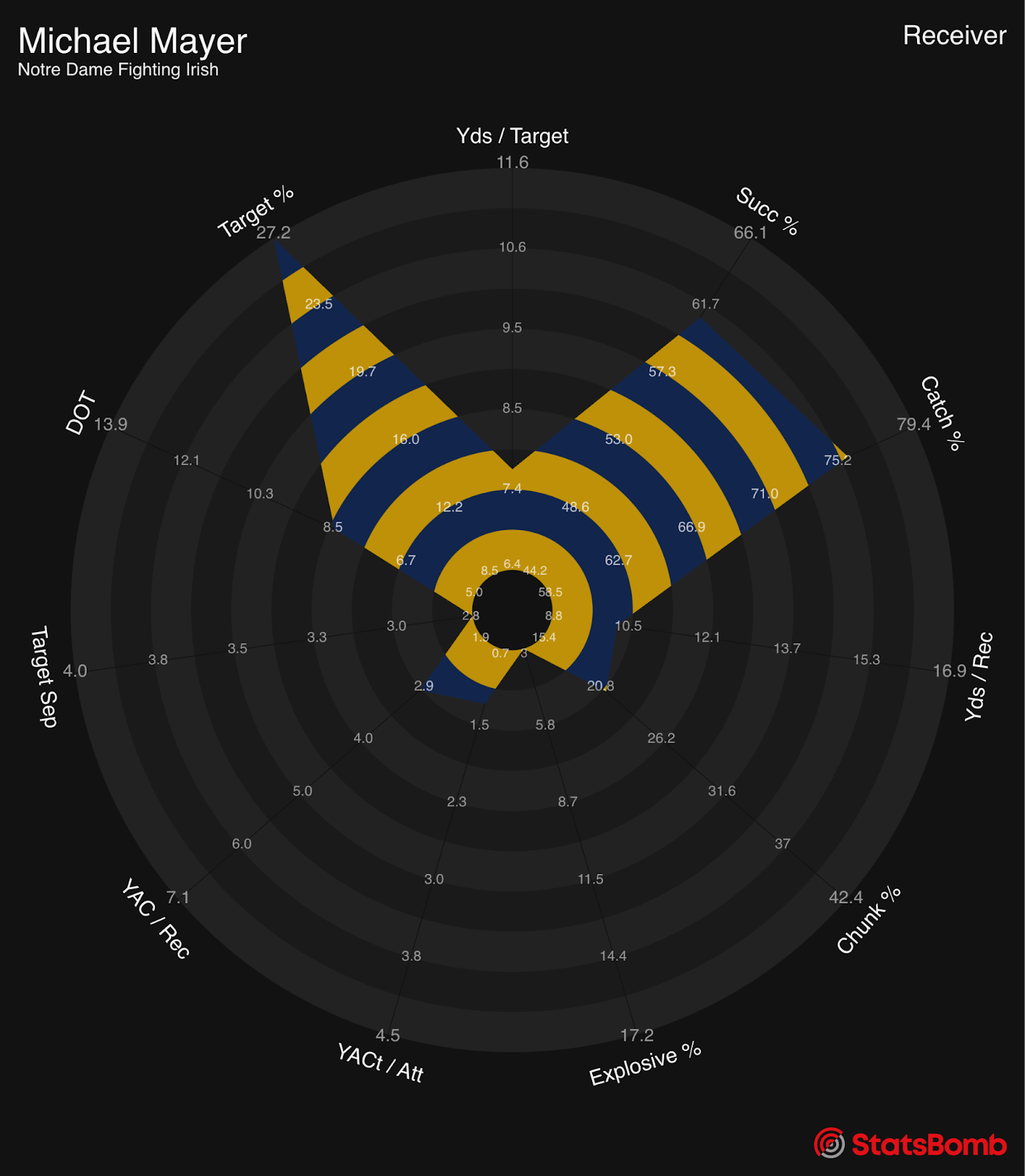
Another big positive for Mayer is his catch radius. His ability to catch away from his body showed up on film, and in the data. High, low it doesn’t matter, he is able to haul in the ball.
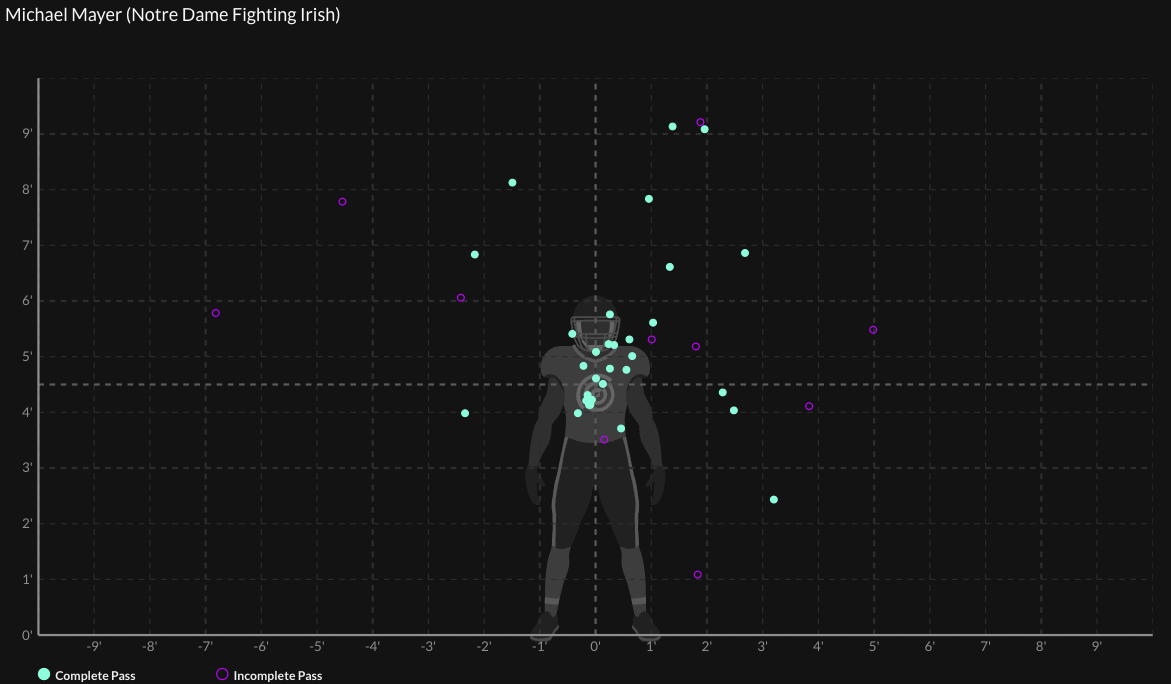
Luke Musgrave
Luke Musgrave was on pace for a great Junior season until he injured his knee. In just two games he had 11 catches for 169 yards and a TD. It was important for him to perform well in his postseason opportunities and show that he was fully recovered from his injury that kept him out of the season. During the Sr Bowl, he clocked in with a top speed of over 20 miles per hour, and he also tested really well at the combine. His two games showed lots of explosive capability in the passing game. He showed off a diverse range of routes, and did a good job stretching the field in the pass game. At 6’6” and 253 pounds, he has the size and athleticism to make an impact right away.
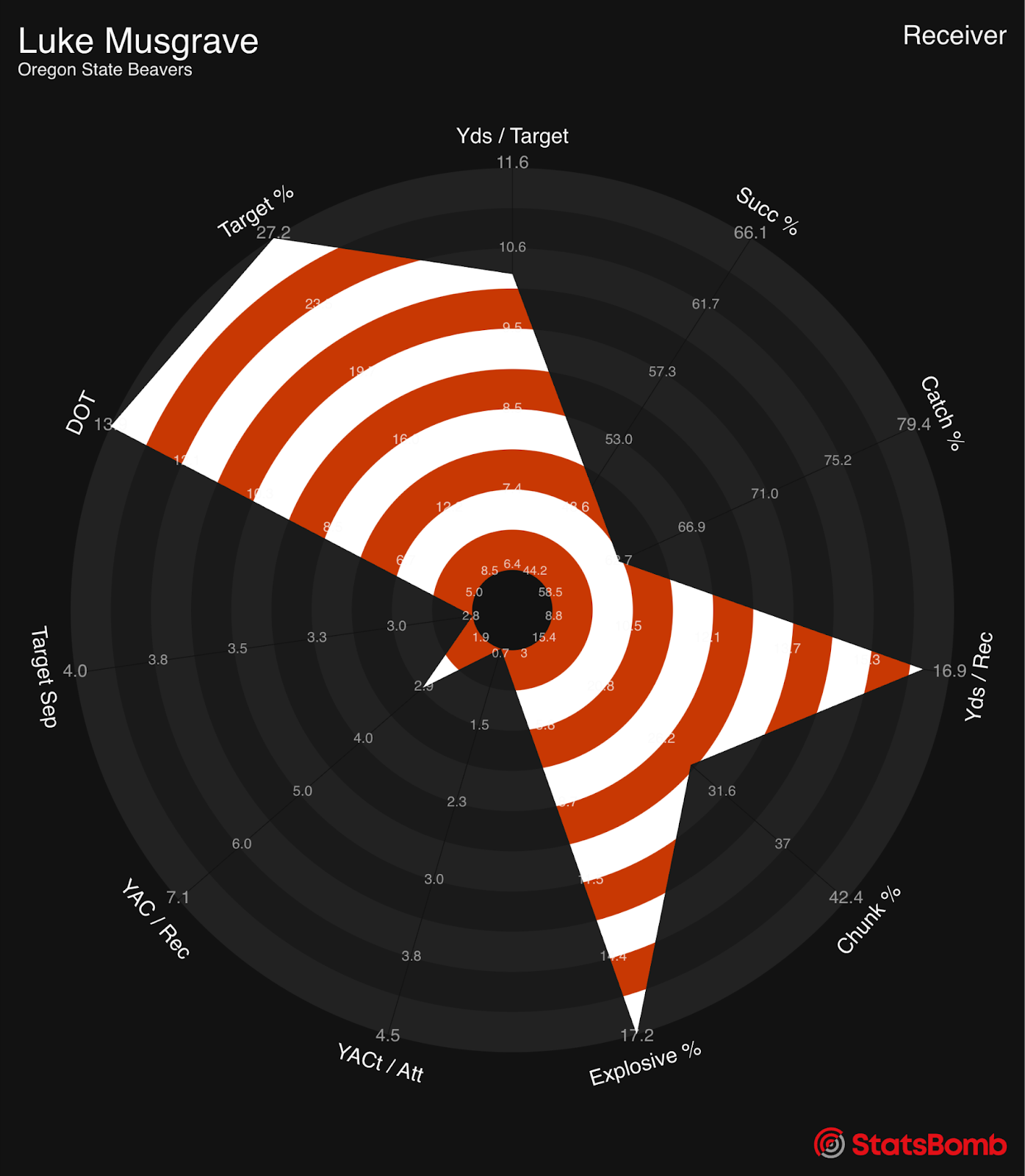
Darnell Washington
Darnell Washington is perhaps the most intriguing of all the potential tight ends in the draft. Based purely on size and athleticism, Washington would be a surefire top-10 pick in the draft. He had a Relative Athletic Score (RAS) higher than #4 overall pick Kyle Pitts (H/T the somewhat confusingly named @mathbomb for RAS), had a longer wingspan than 42 of the offensive lineman invited to the combine this year (82%!!), and ran the 3rd fastest shuttle at the combine this year. Washington clearly has all the tools to be a star at the next level.
Why is he not being discussed as the consensus number 1 TE and top 10 pick? Georgia just so happened to have another generational talent at tight end this past season, Brock Bowers. If Bowers were not at Georgia, one can assume Washington would have gotten even more touches, more attention, and had more opportunities to show what he can do.
Of all the tight ends in the draft, Washington is the best blocker of the group. He has the size and ability to move defenders (or a weighted sled!) in the run game, and can develop into being an adequate blocker in the pass game as well.
Conclusion
As a former tight end, I understand I am biased, but tight ends can be some of the most effective tools for an offense. They create mismatches, can do a little bit of everything, and are big, friendly targets for quarterbacks. The increase in NFL offenses using multiple tight end sets, as well as the wealth of options, makes this year's crop of tight ends so intriguing. I can’t wait til the NFL Draft to see where they all end up.
Matthew Edwards
Head of American Football Analysis
@thecoachedwards

